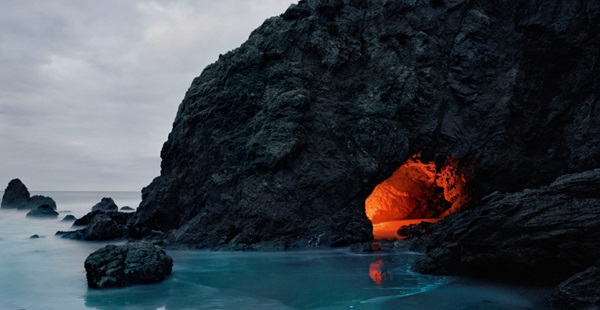“The oldest description of the country is from the 11th century and it presents the country as some sort of utopia, where the inhabitants live a simple, modest and satisfying life with their cattle in caves.”
If you are foreign, also if you are Icelandic, you might be under the impression that Iceland is some sort of queer paradise. And no wonder since that is what a lot of people have been telling you.
There has been an increasing tendency in the past few years to capitalize on the relatively good social position of the Icelandic queer population, i.e. compared to other countries, and present foreigners with the image of Iceland as a queer utopia. Queer Icelanders have been incorporated into the publicity machine due to the full legal equality of gays and lesbians in Iceland since 2010 (other queer people still have a bit of a way to go, mind you), due to Icelanders having the first lesbian prime minister in the world, Jóhanna Sigurðardóttir, and due to the overall increasing emphasis on tourism as the way to lift the country out of the current economic crisis, resulting in the establishment of the first and only queer travel agency.
This development is very understandable when you look at the ways Iceland has been presented to the outside world since shortly after the country was settled in the late 9th century. The oldest description of the country is from the 11th century and it presents the country as some sort of utopia, where the inhabitants live a simple, modest and satisfying life with their cattle in caves. Such descriptions have followed us through the ages and to this day we can still see images, for example in advertisements and tourist brochures, which bear a close resemblance to those early texts. In the late 20th century one can also see how the Nordic countries started building an image of themselves as the most gender equal countries in the world. The rhetoric of the queer paradise is closely related to that image, especially the idea of Iceland as a source of equality and human rights which can, and perhaps should, be exported for the good of others.
The image of Iceland as a queer utopia is thus based on older traditions which shape the expectations of foreigners and influences which sort of images are deemed plausible and which aren’t. One might thus argue that incorporating queer Icelanders into the country’s image inevitably leads to the queer utopia whereby, for instance, the country is a safe haven where no one faces discrimination or has to fear for their health because of their gender identity or sexual orientation.
But, and of course there is a but, there are some pretty big problems which arise when a marginalized group is used to promote a certain image of a whole country or nation. They are in many ways due to the fact that the image is created by cis (non trans) straight people within the tourism sector as well as a privileged group within the queer community, that is cis, white, able-bodied, educated, well to do homosexuals who are also the main target group of those promoting the image. After all, you can hardly manage to buy an airline ticket to Iceland or be in the position to contribute to the creation of an image if your marginalization prevents you from getting a decent education and/or gainful employment. These are also the people who are most likely to pass as cis and/or straight and are therefore less likely to be harassed. But contrary to what the queer paradise will lead you to believe, there have been a few instances of violence against queer people, especially those who defy the gender norms.
in many ways due to the fact that the image is created by cis (non trans) straight people within the tourism sector as well as a privileged group within the queer community, that is cis, white, able-bodied, educated, well to do homosexuals who are also the main target group of those promoting the image. After all, you can hardly manage to buy an airline ticket to Iceland or be in the position to contribute to the creation of an image if your marginalization prevents you from getting a decent education and/or gainful employment. These are also the people who are most likely to pass as cis and/or straight and are therefore less likely to be harassed. But contrary to what the queer paradise will lead you to believe, there have been a few instances of violence against queer people, especially those who defy the gender norms.
So, the questions arise: How can you promote the image of a queer utopia without belittling the adversity many queer people in Iceland face still today? How can you tell the world that queers face no discrimination in Iceland without silencing those who do?
There are no easy answers. The creation of an image is a very complicated process which is not only based on the message that image makers want to send but also the expectations of the receivers. Image creators of nation A don’t simply create an image for target groups in nations B, C and D. The latter have certain preconceptions about Iceland or the north in general and expect a certain kind of image which the people in nation A have to take into consideration if they want their message to be accepted. If the queer utopia is gaining in popularity it means that there is fertile ground for such an image abroad and we have little control over whether it becomes more or less prominent than it already is.
Additionally there are great many people in Iceland whose interests lie in the promotion of such an image, either because they base their income on it or because they want to believe that queer people have gained full equality, there is no more work to be done and they do not have to give up any of their privileges.
This makes it very hard to contradict the queer paradise. All the more reason for the queer community to start asking these questions and debate answers if it wants to prevent the utopia from turning into a dystopia.



